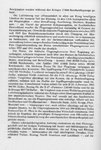all i know is the average to make f6fs in a day is about 20
Yes but that does not mean that they were started the same day that they were finished. You do realize that an aircraft takes more than 24 hours to build from start to finish correct?
By the way to everyone involved in this thread, you might want to check out this book:
America's Hundred Thousand - US Production Fighters of World War 2 by Francis H. Dean
ISBN: 0-7643-0072-5
It covers the production of all US production fighters during WW2. It even has tables broken breaking down monthly production for each aircraft per year.
If anyone needs information on a specific aircraft including production, number built by factory, and accepted, etc., just let me know.

